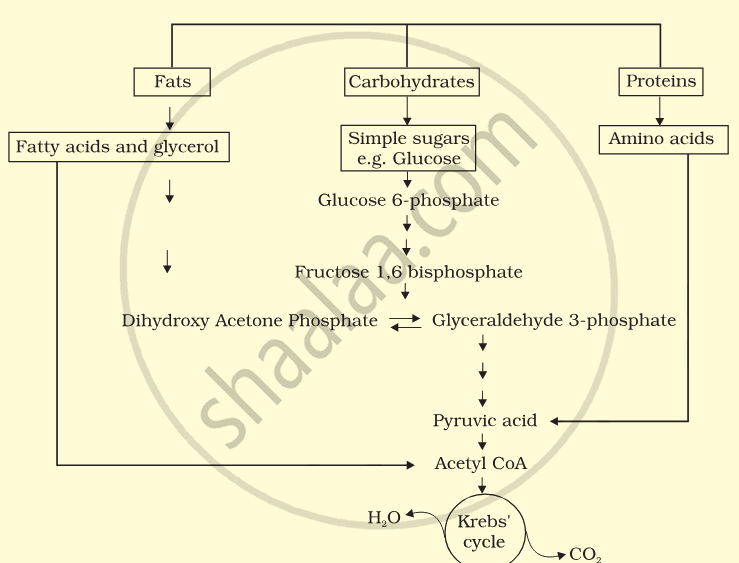Advertisements
Advertisements
Question
Discuss “The respiratory pathway is an amphibolic pathway."
Answer in Brief
Solution
- The amphibolic pathway is employed in both anabolic (building up) and catabolic (breaking down) activities. The respiratory pathway primarily uses catabolism to produce energy, which powers the living system.
- There are several intermediates produced by the route. A large number of them serve as building blocks for the synthesis of primary and secondary metabolites. In addition to being useful in the Krebs cycle, acetyl CoA is a raw material that is used to synthesise fatty acids, steroids, terpenes, aromatic chemicals, and carotenoids.
- An organic acid called ketoglutarate is converted during amination to glutamate, a significant amino acid. Aspartate is produced by the amination of OAA (oxaloacetic acid). Proteins contain both glutamate and aspartate. Other products include alkaloids and pyrimidines.
- Chlorophyll and cytochromes are formed by succinyl CoA. Therefore, when employed as a substrate, fatty acids would be converted to acetyl CoA before going through the respiratory pathway. However, the respiratory route would lose acetyl CoA when the organism needed it to synthesise fatty acids. As a result, the respiratory route is involved in both the synthesis and degradation of fatty acids.
- In a similar vein, respiratory intermediates have a role in both protein production and degradation. Anabolism is the process of synthesis, whereas catabolism is the breakdown of biological activities.
- It would be preferable to think of the respiratory pathway as an amphibolic pathway rather than a catabolic one because it is engaged in both anabolism and catabolism.

shaalaa.com
Amphibolic Pathways
Is there an error in this question or solution?
APPEARS IN
RELATED QUESTIONS
Respiration is ______ process.
The process of the Krebs cycle is ______.
The breaking down processes within the living organism and synthesis processes are respectively known as :
Why is respiratory pathway referred to as an amphibolic pathway? Explain.
Respiratory pathway is believed to be a catabolic pathway. However, nature of TCA cycle is amphibolic. Explain.
